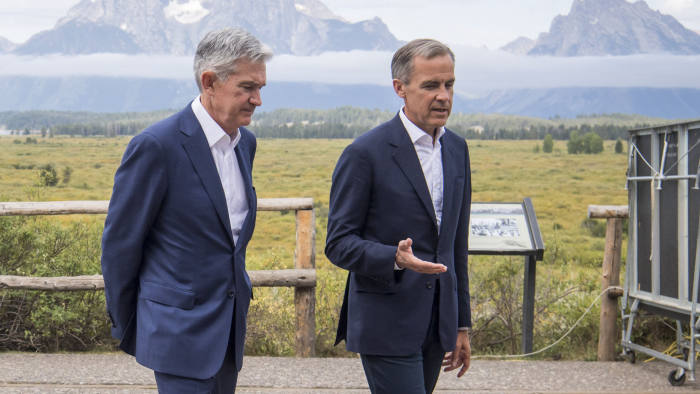Finding Common Ground: How Central Banks Can Work Together When Economies Move in Different Directions

Finding Common Ground: How Central Banks Can Work Together When Economies Move in Different Directions
Against the stunning backdrop of Jackson Hole, central bankers from around the world have gathered for the yearly economic policy symposium hosted by the Kansas City Federal Reserve. This year’s theme, “Changes in the Global Economy‘s Structure,” couldn’t be more fitting, as it explores a pressing question arising from shifting economic landscapes: How can central banks coordinate their strategies when their own economies are taking different paths?
In the past year, central banks worldwide have joined hands to handle the rising inflation crisis by raising interest rates together. This collaborative action aimed to tackle the impact of climbing prices. However, things have changed since then. With economies choosing different routes, the uniform approach might not work as well. Instead, a more intricate problem has arisen: how to manage the diverse paths.
The challenge becomes clear when imagining one country’s economy on the upswing, experiencing strong growth and low unemployment, while another struggles with slow progress and job shortages. The methods that used to help might not be enough now. This is where the idea of central bank coordination comes into play, with a twist – coordination that respects and considers the different economic paths.

The Strength of Working Together
As central bankers meet in Jackson Hole, the need for strategic coordination when economies diverge takes center stage. Collaborating, even when faced with different circumstances, holds significant power. A coordinated approach can let central banks share ideas, strategies, and best practices, helping them learn from each other. However, the nature of coordination might need to change from uniform actions to more thoughtful guidance.
Rethinking How We Coordinate
Diverse economies need a new way of thinking about coordination. This new approach should consider the unique challenges and opportunities each country faces. Instead of just following the same path of raising or lowering interest rates, central banks could focus on sharing insights that help tailor policies to their own economic realities.
Imagine if Country A is experiencing a growth spurt, while Country B is struggling with slow growth. Instead of both countries using the same methods, Country A could share its strategies for managing growth steadily. In return, Country B might share creative ways to boost its economy and create jobs.
Sharing Data and Insights
Sharing data and insights could play a vital role in this new coordination framework. Central banks could set up regular meetings to discuss economic data, forecasts, and policy experiments. This exchange of information could help central bankers understand each other’s economies better, leading to smarter decisions that match the current economic conditions.
Being Flexible in Our Plans
In a world of different economies, being flexible is crucial. Central banks might need to change their strategies to talk about policies in simpler terms that people can understand. This clear communication can help the public grasp complex ideas while keeping trust in what central banks are doing.
Thinking About the Long Term
Coordinating when economies are different means looking beyond short-term solutions and focusing on long-term strength. Central banks could work together on projects that tackle shared issues like climate change, technological shifts, or income inequality. By working together on research and policies, they might find smart solutions that help every economy, no matter their current path.
Balancing Act
While celebrating the differences, central banks also need to be careful. Big differences in how they act could lead to problems like unstable markets, too much money moving around, and even currency value battles. Finding a balance between coordinated but still individual policies is a skill that central bankers must develop.

In Conclusion
As the symposium in Jackson Hole continues, central bankers are facing the challenges of a new economic reality. The inflation crisis brought them together before, but today’s situation needs a more advanced approach. Embracing differences while still working together is the key to navigating the complex paths of economies.
With the power of shared ideas, information, and policies, central banks have a chance to guide their economies toward steady growth and stability. This approach acknowledges both their uniqueness and their shared goals, setting a course that respects their differences while aiming for common success.




